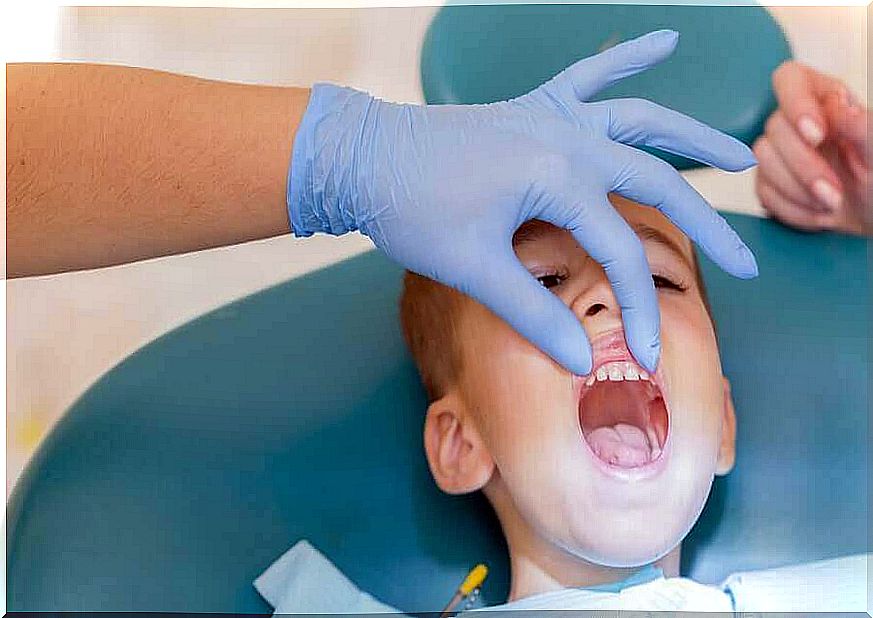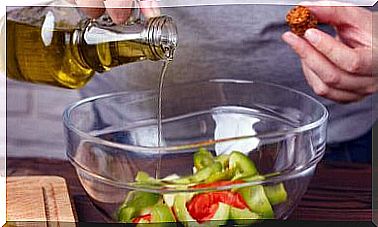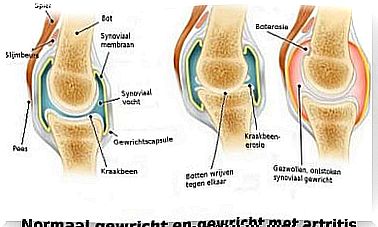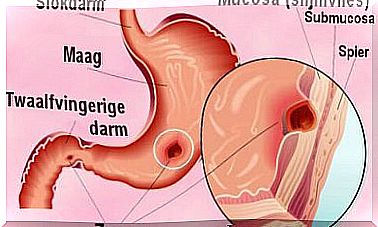Milk Tooth Replacement

The replacement of a baby tooth is a treatment in which a dentist puts a tooth that has fallen out or knocked out due to a blow, for example, back into the cavity of the gums. The goal is for that tooth to recreate ligament fibers with the gums so that the tooth can be held back in place.
In general, temporary teeth, also called baby teeth, are replaced as a treatment for avulsions. A dental avulsion is the complete removal of a tooth from its socket, usually through a blow. It often involves the upper central incisors.
In children, the best possible treatment is to put the tooth back in place to try to reshape the tissue. What does this treatment consist of? What are the consequences? Keep reading to learn more.
What happens to the tooth after the avulsion?
When the tooth comes out completely from the gums, the ligament fibers that hold it to the gums break. It also breaks the vasculonervical package allowing blood supply and nerve currents to reach the tooth.
How do you store the tooth in a safe way?

The less time the tooth is out of the mouth, the more successful the treatment will be. This is why replacing a baby tooth is considered an emergency.
The most important part of this process is that you don’t touch or clean the tooth with a tissue or anything. By removing the layer that is left on the tooth root, you remove all possible fibers that may still be there.
There are several liquid solutions that you can keep the tooth in until you get to the dental clinic. The ideal liquid solution to submerge it in is Hank’s Solution (Spanish link).
- Hank’s Solution is a culture method that allows it to maintain the correct pH level to prevent the tooth root from disappearing on its own. You can find it in the pharmacy.
- The second best liquid to preserve a tooth is milk, preferably skim milk. It maintains the vitality of fibroblasts for three hours.
- If you don’t have any of these fluids, you can put the tooth in a physiological serum. If you don’t have that either, you can keep the tooth in water. If you don’t have any liquid at all, you can also store it in saliva. In the case of saliva, the ideal place to keep it safely is under the tongue, to prevent it from being swallowed.
How is the replacement of a baby tooth performed?
First, the dentist will examine the entire affected area to rule out any fractures or cuts that require stitching or other injuries. After making sure that everything is in order, the dentist gently washes the cavity with physiological serum.
Preparing the tooth
If you’ve dipped the tooth in any of the above liquids, no further preparation is required. However, we recommend placing the tooth in a container of Hank’s Solution a few minutes before treatment.
Any time you need to touch the tooth, do it at the crown and don’t touch the root. In addition, it must remain in a humid environment. The longer the tooth is out of the mouth and in a dry environment, the worse the prognosis for replacement.
Placing the tooth
The dentist slowly inserts the tooth into the cavity of the gums until the tooth is in place. Once in place, the dentist must splint it, that is, attach it to adjacent teeth to provide support.
The splinting is normally done with a semi-rigid wire inside, similar to a wire placed after a brace has been removed.
The dentist should always take an X-ray to make sure the tooth is in place and there are no problems with the bone. The last thing the dentist should check is the sealing of the tooth. There should be enough space so that too much force is not applied to it while chewing.

Pharmacological Treatment
The dentist will usually prescribe the necessary medications to control possible infection and inflammation. He may also suggest pain medications to ease the pain of the blow and the procedure.
Baby tooth replacement checks
The dentist should check the tooth one week, three weeks, two months, six months and one year after the procedure. All these dental appointments are there to make sure that everything is in order and that the tooth has no infections.
Consequences of replacing a baby tooth
We should always consider the age of the child and the degree of germ development of the adult tooth to avoid possible injury when replacing the baby tooth. When in doubt, we should always prioritize the well-being of the adult tooth.
If the tooth that falls out during the trauma is an adult tooth, replacement is also an optional procedure should the patient wish.









